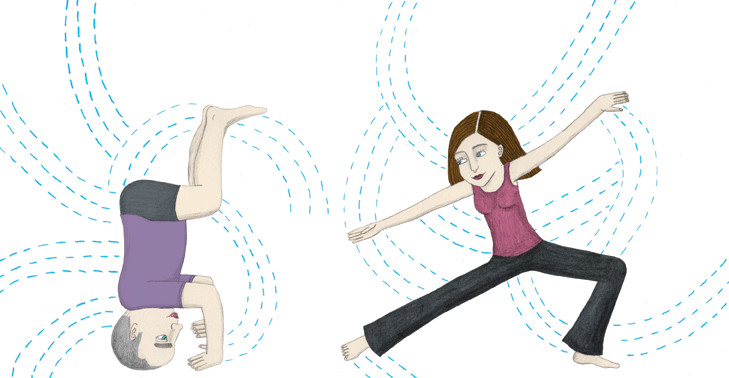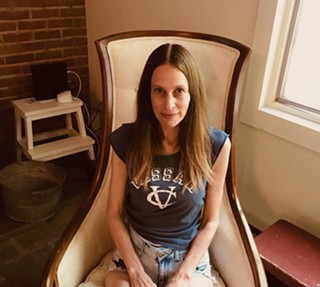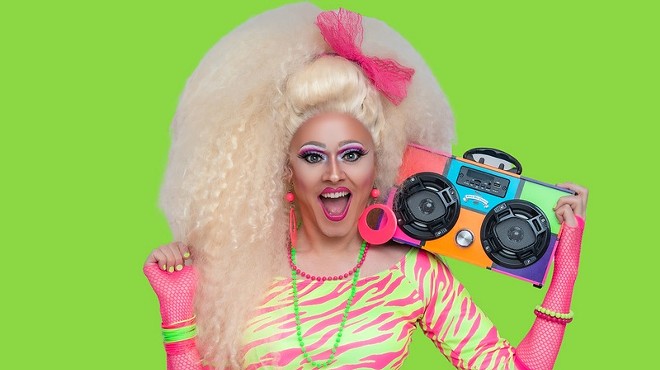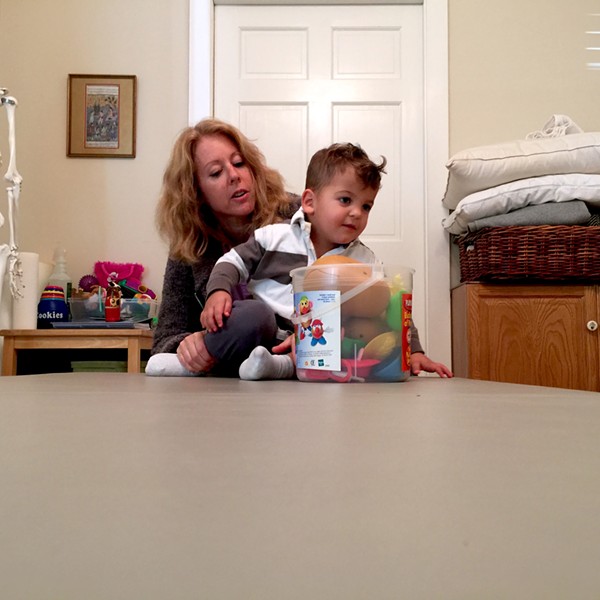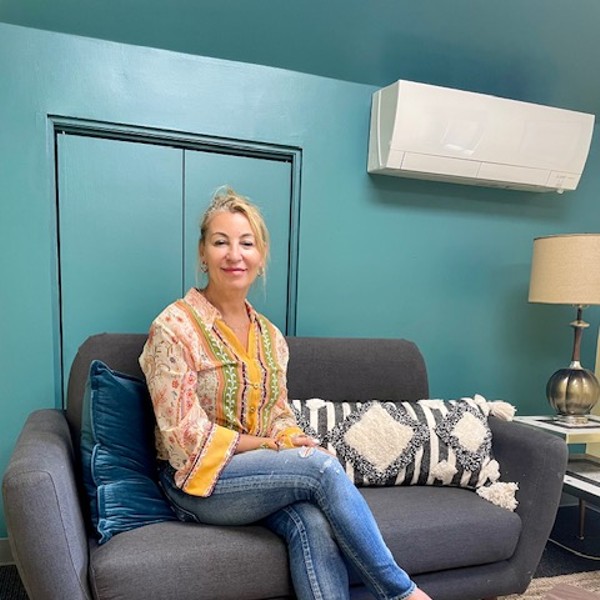Touched by Feldenkrais
A Program of Therapeutic Movement can Treat Mobility Issues and Pain--and Change the Life of One Little Girl
[]
In 2004, a four-month-old baby named Ruby entered the office of West Hurley physical therapist Zahava Wilson. Wilson’s new patient had cinnamon hair and doll-like beauty, yet the way she held her tiny body revealed the deep physical effects of a traumatic birth. During labor, Ruby suffered a brain injury that burdened her with a litany of medical diagnoses under the broad umbrella of cerebral palsy. Cortical visual impairment left her unable to see. She endured seizures and feeding disorders. And, most apparent to Wilson, Ruby’s arms were twisted and her spine was arched and rigid with spastic quadriplegia. Early-intervention physical therapy was the goal of Ruby’s parents, Rhonda and Todd Olinsky-Paul. Yet after about six weeks of sessions with Ruby, Wilson saw little if any improvement in the baby’s mobility. “I was at a loss from my physical therapy bag of tricks because Ruby’s case was so involved—she was so limited in what she could do,” says Wilson. Also trained in the Feldenkrais Method, Wilson decided to shift gears with this alternative approach. “I’m going to try something new and see what happens,” she said to Rhonda. After a few minutes of this work—which involves gentle touch and a series of guided movements—both therapist and mother noticed a change. The baby’s breathing became more relaxed and she started moving differently. “I still get chills when I think about it,” says Wilson, who recalls Rhonda stopping time with an emphatic directive. “‘Zahava,’ she told me, ‘From now on, I only want you to do this work with Ruby.’”
The Feldenkrais Method is a program of therapeutic movement named after its originator, a Russian-born Israeli physicist named Moshé Feldenkrais (1904–1984). The story goes that upon learning that he was facing surgery after a serious knee injury, Feldenkrais developed this system—based on the principles of physics, biomechanics, human physiology, and brain science—to effectively cure himself. A Judo expert, mechanical engineer, and apparent Renaissance man, Feldenkrais turned his vigor toward educating others in a program that has broad applications. Today, practitioners use the Feldenkrais Method to treat back, knee, and shoulder problems; children with autism, Asperger’s, brain damage, ADHD, and undiagnosed developmental delays; and those with mobility issues due to multiple sclerosis, scoliosis, stroke, brain tumors, head trauma, cerebral palsy, and other neurological complaints. Athletes and even musicians who wish to enhance performance have turned to Feldenkrais work for its potential to increase range of motion and improve flexibility and coordination.
Chronic pain can also find a powerful foil in the Feldenkrais Method. One client of Wilson’s, a contractor, came in with back pain so severe that it had thrown him into a morbid depression. “Now he has a business as a stoneworker,” she says. Another was a woman in her sixties with debilitating pain who said after one session, “This is the first time I have felt hope.” Says Wilson, “Usually Feldenkrais is the last stop. They’ve tried so many things that didn’t work, and then one day someone convinces them, ‘Why don’t you try this thing with the weird name?’”
The Ever-Changing Brain
If the Feldenkrais Method sounds like a miracle cure for an eyebrow-raising array of ailments and complaints, practitioners like Wilson will be the first to qualify that it’s not the right modality for everyone. Yet its potential to be effective in treating a diverse range of cases takes root in a science that has seen vast growth in recent years: neuroplasticity. Feldenkrais based his method on brain plasticity—the ability of the brain to change and optimize itself—long before the term even existed. Until relatively recently, mainstream science regarded the brain (specifically, the adult brain) as a static, fixed organ, yet recent research has literally turned that theory on its head. Neuroplasticity has been shown to occur on a variety of levels ranging from new habit formation and learning to the cortical remapping that can occur when an injured brain repairs itself. “Feldenkrais work is all about the brain reorganizing itself,” says Wilson. “There are certain criteria that the brain needs to do that. As practitioners, we use variation, slowness, and lack of force when working with the body. The brain responds to those things. When we touch and move a person’s body, we’re giving input to the brain to enable it to make a change. Ultimately it’s about changing the habit patterns of a person.”
After Ruby’s first Feldenkrais experience, Rhonda was amazed. Only recently had doctors given the baby a grim prognosis, telling her parents that she would probably never learn to walk or talk. “I was trying all sorts of therapies to help Ruby, and if something wasn’t making a difference, I would drop it,” says Rhonda. “When I first saw it, I didn’t understand how Feldenkrais worked. I thought, ‘What is this, voodoo?’ I didn’t get it, but I knew we had to do it again.” Eager for more, the Olinksy-Pauls took Ruby to see Marcy Lindheimer, director of the Feldenkrais Learning Center in New York City. It was here that, when Ruby was six months old, she raised her arms above her head for the first time. “It was magic,” recalls Rhonda. The next step was to take Ruby across the country to see Anat Baniel, creator of the Anat Baniel Method, which elaborates on Feldenkrais work for special-needs children. Wilson, Lindheimer, and Baniel stayed in touch about Ruby’s case, forming a therapeutic triumvirate. Meanwhile, inspired by Ruby’s progress, Wilson went on to attain advanced training and ultimately phased out her physical therapy practice so she could focus exclusively on offering the Feldenkrais Method to clients.
Moving Beyond the Habitual
Wanting to experience Feldenkrais for myself to better wrap my mind (and body) around its principles of neuroplasticity, I arranged a session with Woodstock practitioner Christine Becker. “All movement starts in the brain,” says Becker in a spare, comfortable treatment room above her Pilates studio, The Moving Body.
“Feldenkrais called muscles ‘hinges of habit.’ If you think about it, we develop a movement pattern or strategy for something as simple as holding our head up. As practitioners, we try to present with our hands the opportunity for moving differently.” Before we begin, Becker explains that the Feldenkrais Method offers two ways of working with people. One is through a group lesson called Awareness Through Movement. The other is with one-on-one work called Functional Integration, which is what I am about to receive.
As I lie on the padded treatment table, Becker starts by cradling my head and letting it turn from side to side. She doesn’t manipulate my body but rather gives it space to do something. She seems to suggest things with her hands. Presenting my head an opportunity to turn, she discovers that it revolves easily to the left but not so easily to the right. Like everyone, I am a bundle of habits, some of them learned as early as infancy, when I perhaps started sleeping with my head turned to the left. After a few minutes, the movements Becker suggests become more complex. She guides my upper body to turn first to the left, my easy side, and then to the right, where it feels more rigid. Ultimately my muscles learn to make that rightward turn more fluid and graceful. Winding up her brief sample lesson, Becker explains that the movements can build to greater intricacy and become yet more therapeutic. I leave with a deeper understanding of my body’s habits and why Feldenkrais called his work "somatic re-education.”
Another takeaway from my session with Becker is a gooey, relaxed feeling similar to a post-massage state. As I float out of the studio to my car, I’m reminded of a conversation with another practitioner down in Cold Spring, Tara Vamos. “Feldenkrais offers a great way to bring the body into a state of relaxation,” she says. “Sometimes that shift can realign your system so that it’s able to get out of pain.” Vamos discovered Feldenkrais when a ballet teacher offered an impromptu Awareness Through Movement lesson during a dance class about 15 years ago. At the time, she had a nagging shoulder injury, yet after about 10 minutes of gentle ATM exercises, the pain had abated. In an hour, it was gone. Vamos has seen many clients experience quick changes like the one she experienced. “You’re sending the brain and nervous system a message that everything is okay, and that it’s all right for muscles to loosen up,” she says. “The ability to let go—to let all the muscles that aren’t working be loose and ready to act—is core to Feldenkrais. You can take this in so many directions—some practitioners even work with writer’s block and creative issues. If you’re trying to accomplish something and it’s not working, you need to step back and discover different ways that you could do it. If you keep banging against a wall, you might not notice that there’s a door over there. Instead of a dead end, you can discover a sense of options.”
A Brighter Beginning
Ruby’s story offers no better example of Feldenkrais’ uncanny manner of opening up possibilities—of giving hope where there was little hope before. In Wilson’s office one recent afternoon, I meet a bright-eyed eight-year-old with an infectious smile. Ruby is not strapped to a wheelchair, as some doctors had predicted: she can walk, and she talks with a combination of spoken English and American Sign Language. Her vision, gone at birth when she lost all use of her brain’s occipital lobe, has returned (though not 100 percent) thanks to neuroplasticity: Another area of her brain took over the task of interpreting input from her eyes. “We have a neurologist who says, ‘I’ve seen the MRI and I don’t understand how she can do these things,’” says Rhonda. “She comes into his office and makes him laugh.” Watching her with Wilson, I can see how she would do that: Ruby is a mischievous, curious patient, asking questions, prompting her therapist to sing, and glancing at me to make sure I’m enjoying the show. The Olinsky-Pauls are moving to Vermont in August yet will return to West Hurley monthly for Ruby’s Feldenkrais sessions with Wilson. “Ruby has cerebral palsy and she’s going to have challenges for the rest of her life,” says Rhonda. “But there is no way she’d have the same quality of life that she has now without Feldenkrais. My first job is to protect her spirit, but beyond that to help her live her life to its fullest potential. I don’t think Ruby would have come close to that without this work. She’s on her way.”
Visit Gorubygo.com to learn more about Ruby’s story and to make a donation to cover the cost of her therapies.
RESOURCES
Zahava Wilson (845) 679-5226
Christine Becker (845) 688-1369
Tara Vamos (845) 265-2166







